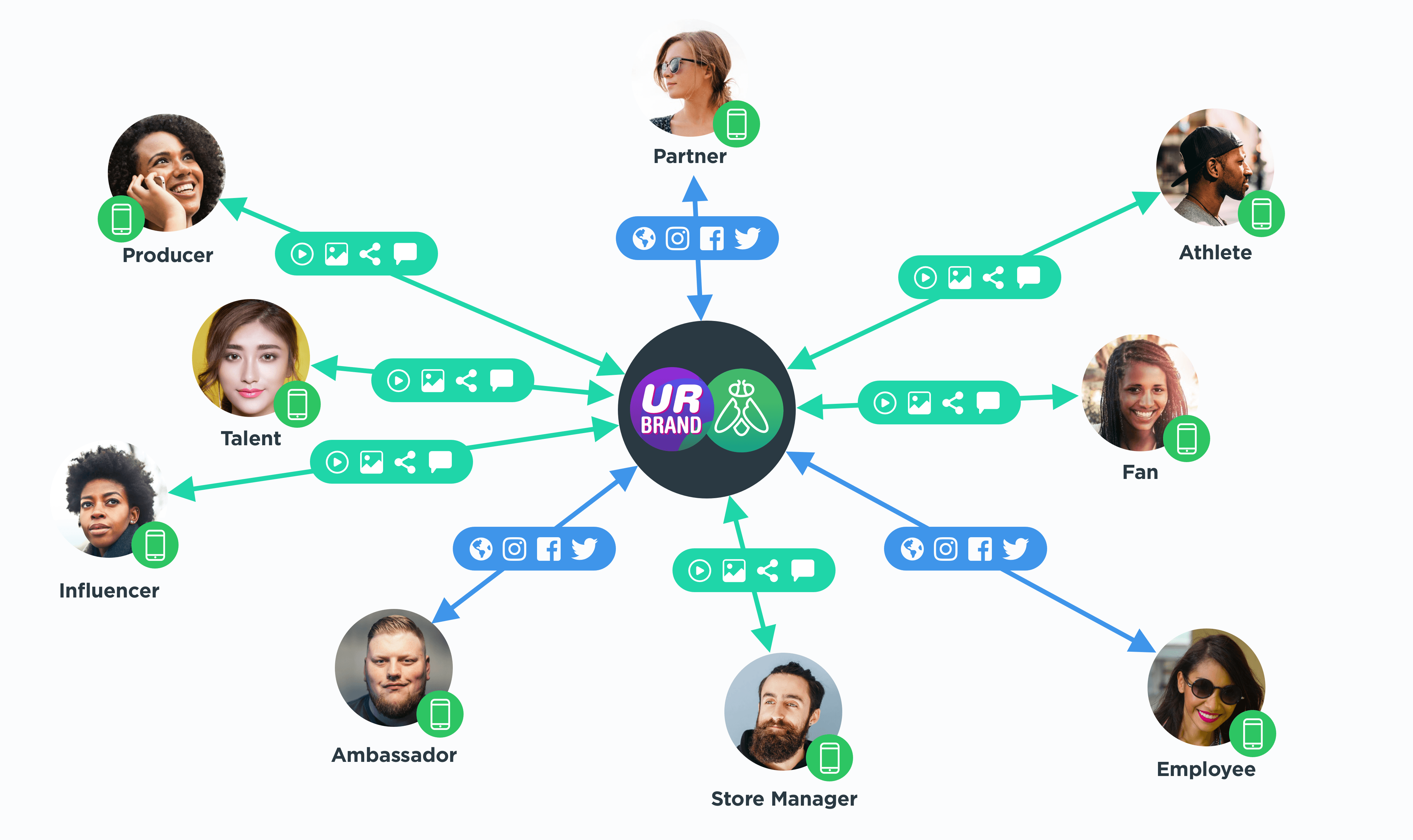Paid influencer marketing has taken off in recent years, but is your brand behind the times in thinking about more authentic ways to create and promote your social content?
Influencer marketing continues to grow as an important part of the marketing mix, with forecasts of up to $6.3 billion in 2018. However, transparency, brand control and other issues surrounding paid influencers are pushing brands to start thinking beyond macro-influencers, along with indirect and transactional influencer relationships. This activity is happening even though these tastemakers typically have large followings, high social value and expertise within a community that a brand wants to reach.
Increasingly, savvy brand marketers are being more selective about the paid influencers they work with and how they work with them, and are also turning inward to their own communities with whom they have existing direct relationships—fans, ambassadors, employees, talent and more.
These first-degree advocates are most invested in a brand and motivated to create and share engaging content. They can help a brand build more direct trust, reach and engagement among their networks of friends, family and followers. Ultimately, community members have the most valuable, authentic and influential voices to help tell a brand’s stories at scale.
Let’s take a deeper dive into why smart marketers are thinking differently now about utilizing paid influencers for social content success. Read on to learn how to identify and mobilize the essential and still under-utilized community caretakers of your brand.

The Lure of Paid Influencer Marketing
Paying influential people to promote a brand or product on social media has caught fire over the past few years, in sync with the proliferation of social media usage and platforms, which offer direct access to individual consumers and easy word-of-mouth sharing. This activity has supported the rise of Instagram, influencer marketing’s most popular and visual social platform.
Influencers have made their mark across brand categories, from fashion and beauty to parenting, travel and tech. The payments for social media influencers to harness their creativity and connections for brands have been changing and generally come in the form of compensation per post, advertising buys on influencer content, brand ambassadorship agreements, products or other perks.
Within the influencer market, there has been a growing shift in how brands commission content as well. They’ve been moving from macro-influencers with large audiences and reach to niche, micro-influencers, who have fewer followers but tend to drive higher levels of engagement.
This movement has followed marketers’ pivots toward prioritizing social engagement versus reach to drive deeper audience loyalty and sales conversion, and marketing spend efficiency. At the same time, social platform algorithm changes, such as those on Facebook, have deprioritized brand content in favor of community-based content including posts from family, friends and extended networks that could include these micro-influencers.
Paid Influencer Marketing Risks Are Rising
Despite rapid industry growth, paid influencers—particularly macro-influencers—have faced a host of criticism and challenges. Marketers should probe for these when considering working with an influencer:
- Authenticity – Does the influencer have a real connection to your product or brand or do they endorse multiple brands within your competitive set?
- Transparency – Do they consistently follow commerce and industry regulations that have been put in place around post disclosures, such as designating posts as sponsored?
- Fraud – Are their follower counts, engagement rates and other performance metrics accurate and truthful? If not, these false positives may create inaccurate reporting and marketing budget waste.
- Brand safety – Is the influencer’s content aligned with your brand values? He/she is an extension and reflection of your organization.
- Content control – Are influencers following your creative guidelines, styles or timelines needed for brand content?
Along with these issues, consumers are becoming more sophisticated and smarter about social media—they see through paid influencer posts as brand advertising, not word-of-mouth information or recommendations. Consumers are fatigued by inauthentic influencer content. Over time, audiences may stop trusting these messages, tune them out and seek quality, authentic sources of content elsewhere. It’s wise to start thinking about those sources now.
Identify and Mobilize Your Brand Communities
More and more, marketers are turning to an underutilized source for social content—their own communities—to limit exposure to these paid influencer problems. In this way, they can harness the people that have the closest, most authentic personal connections to their brands—and to potential new audiences. In many instances, a brand community will also include trusted influencer relationships. Community member recruitment can come from all corners of a brand universe, such as:
- Customers
- Fans
- Ambassadors
- Employees
- Talent
- Athletes
- Partners
In looking at an external community, marketers can examine their social channels to monitor social engagement or explore social listening tools to determine who is already talking and posting positively about their brand online. Internal communities such as employees and talent likely have great interest and opportunities to promote brand content at events or during product launch periods.
Once these communities are identified, mobilizing them and streamlining their content is getting easier, too. At Greenfly, we work with brands to strengthen and activate their community relationships by providing a private, collaborative platform to communicate, create and share authentic social content with them. Here’s how:

- Via the Greenfly mobile app, a social media team invites community members to contribute photo or video content about their brand experiences by following a simple creative brief.
- The team reviews the contributed content, provides feedback for any revisions needed through in-app messaging and approves it for use before it’s shared by the brand and community—to remove the risk of misalignment.
- The team can add customized branding that is attached to the content wherever it gets distributed.
- Similarly, a social media team can invite community members to share pre-approved brand content to their trusted social networks.
- Analytics tools help monitor content performance and community contributor activity.
Benefits of Community-Based Content
Marketers who integrate community-based content into their social mix minimize the risks they face when only using paid influencers. These risks include a lack of transparency, safety and content controls, inauthentic messages and fraudulent activity. They also can save time and money when promoting their brands and engaging and activating their audiences. Content is infused with meaning and relevance as trusted networks amplify it across social channels.
Are you ready to think about community-based content? Contact us at Greenfly.
For more social content and marketing insights, subscribe to our blog.



